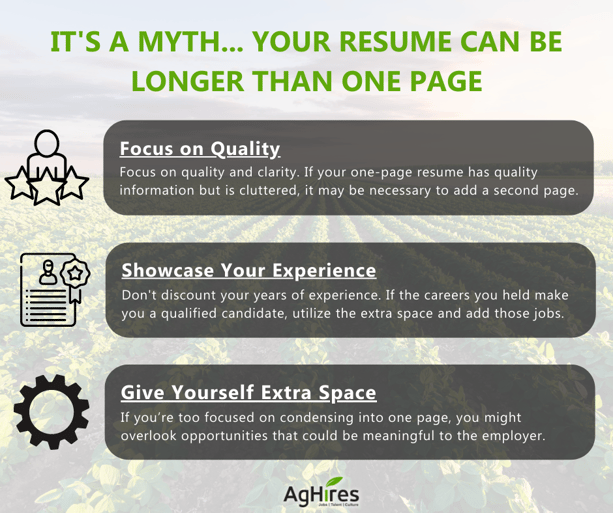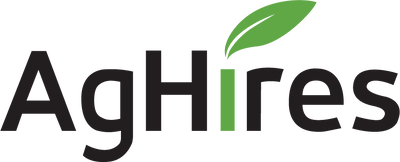
The average hiring manager spends about six to ten seconds scanning a resume for the first time. Most of the time, it is the hiring manager or recruiter’s initial impression of you. Help the hiring manager get to know you better by making sure your resume is a great representation of your qualifications and experiences. To help you make sure your resume is at its best, we’ve compiled the ultimate list of resume tips.
SELLING YOURSELF
Keep it short and relevant
You don’t need to include everything on your resume, just the highlights that match the job you’re applying for. Keep it to a page or two at most. Think of your resume as a marketing tool to sell yourself to the hiring manager or recruiter. They don’t care about the job you had at McDonald's when you were 16, they want to know why you could be the ideal candidate for their job.
Skip the objective
An objective statement is only necessary if you are changing industries, you need to explain gaps, or why your experience may not match what you are applying for. Otherwise, your experience should speak for itself. If you’re looking for a technician role and for the last 15 years you’ve been a technician, you don’t need an objective to explain to the hiring manager you are looking for a technician role.
Use reverse chronological order
Putting your most recent experience first, which will likely also be your most relevant experience, is the best way to organize your resume. The same goes for your education
Include a link to your LinkedIn profile
You can include more of your professional story on your LinkedIn profile, so it is a good idea to include a link to your profile on your resume. This allows the recruiter to look at your experience in a little more depth after their initial scan. Learn more about how to optimize your LinkedIn profile for your ag job search.
FORMATTING
Simple format
Make it easy for someone to quickly scan. Use a simple font, like Arial or Helvetica. Use a 12-point font with good spacing between lines. Keep all formatting the same throughout the resume. If you italicize or bold the company name and position, make sure you do it for all your experience. Keep all the dates formatted the same and so on.
Make your contact info stand out
Make your phone number and email easy to find and at the top. This can also be an effective spot to include your LinkedIn profile link. Also include your city and state near the top of your resume. You don’t need to provide your full home address. If you’re looking to relocate for your next role, simply include “Looking to relocate” next to your city or state so the hiring manager is aware.

EXPERIENCE
Limit your bullet points
Each work experience entry on your resume shouldn’t have more than 6 bullet points. You want to keep it short and related to the job you’re applying for if possible. Not every daily task is needed, just the most important ones.
Keep jargon to a minimum
Remember, sometimes an HR Manager or an assistant maybe be reading your resume that may not know all the jargon of the industry or job, so keep it easy to understand for the average person.
Talk up your achievements
Give them the numbers, facts, and figures of your accomplishments. Did you help a past employer decrease costs? How much did you save them? Did you reach or exceed any company goals in a specific time frame? Including some data gives the recruiter or hiring manager a good idea of your work ethic and dedication.
Show your skills
Are you a good leader? Great communicator? Don’t just use those words in your resume. Show the hiring manager you have those skills in your explanation of how you achieved your tasks. Mention you communicated or collaborated on a specific project with the results. Or mention you lead a team to reach a specific goal.
Keywords
Include the keywords listed in the job description. This will help the hiring manager see you have the right skills and qualifications needed for the job, and ensure your resume passes through applicant tracking systems that scan for those specific terms.
EDUCATION
List your education second
While your education is important, most employers are more interested in your real-world related work experience. The only exception to the rule is if you’re a recent graduate, then your education will most likely be more relevant than your past work experience. That said, list your work experience first when formatting your resume, with your education section to follow.
Know when to include your GPA
Only list your GPA in your resume if you are a recent graduate or are applying for internships. If your GPA is on the lower side, we recommend leaving it off of your resume altogether. Most hiring managers are not concerned about your GPA, especially the further you progress in your career. However, a strong GPA can be a good addition to your resume when you are applying for your first jobs post-graduation.
OTHER
List your skills
Include a skills section. List any other relevant skills you may possess like welding, electrical, or mechanical skills that may or may not be listed in your work experience. Maybe it’s something related to the job you gained from an interest or hobby.
Awards and honors
Remember that your resume is a marketing tool, so you need to brag about yourself and your achievements. List any awards or honors you have earned in your current or past jobs, such as Employee of the Month or an Outstanding Customer Service Award.
GAPS AND SHORT-TERM EMPLOYMENT
Unemployment gaps
Don’t hide your resume gaps or any job-hopping in your employment history, just strategize. A recruiter or hiring manager will be drawn to the gaps and/or job-hopping and will draw their own conclusions, which could have a negative impact on you. Explain the gaps in your cover letter or add a summary at the beginning of your resume to explain. Read more on bridging the gap here.
Remove short-term jobs
Don’t list the jobs where you were only employed for a short time, such as a few months. Most likely, they are not relevant anyway. This will help you clear the unnecessary clutter from your resume. And if you are asked about the short gap in your resume, just be open.
FINALIZING
Proofread, then proofread again
The most important step in finalizing your resume is to proofread it, then proofread it again. Make sure everything looks consistent and all the grammar and spelling mistakes are corrected. It shows your attention to detail when your resume is clear of mistakes. Have a friend or family member proofread your resume, too.
Name your file
Include your name in the file name of your resume. This will help the hiring manager or recruiter keep organized and ensure they don’t skip over your resume. Instead of naming your file “Resume”, use something like “Last Name, First Name – Resume".
Save as a PDF
Saving your resume as a PDF file will help to ensure the formatting stays correct when emailing or sending your resume electronically
Keep it updated
Always make sure your resume is up to date. Add any new responsibilities, positions, or new skills as you acquire them, making it easy to apply right away when you find the perfect opportunity.
Ready to find your next job in agriculture? Search from thousands of jobs in agriculture, food production, horticulture, biotechnology, and more at AgHires.com.
For more tips on resumes, interviews, and other career advice, visit our blog and follow us on YouTube.






